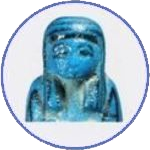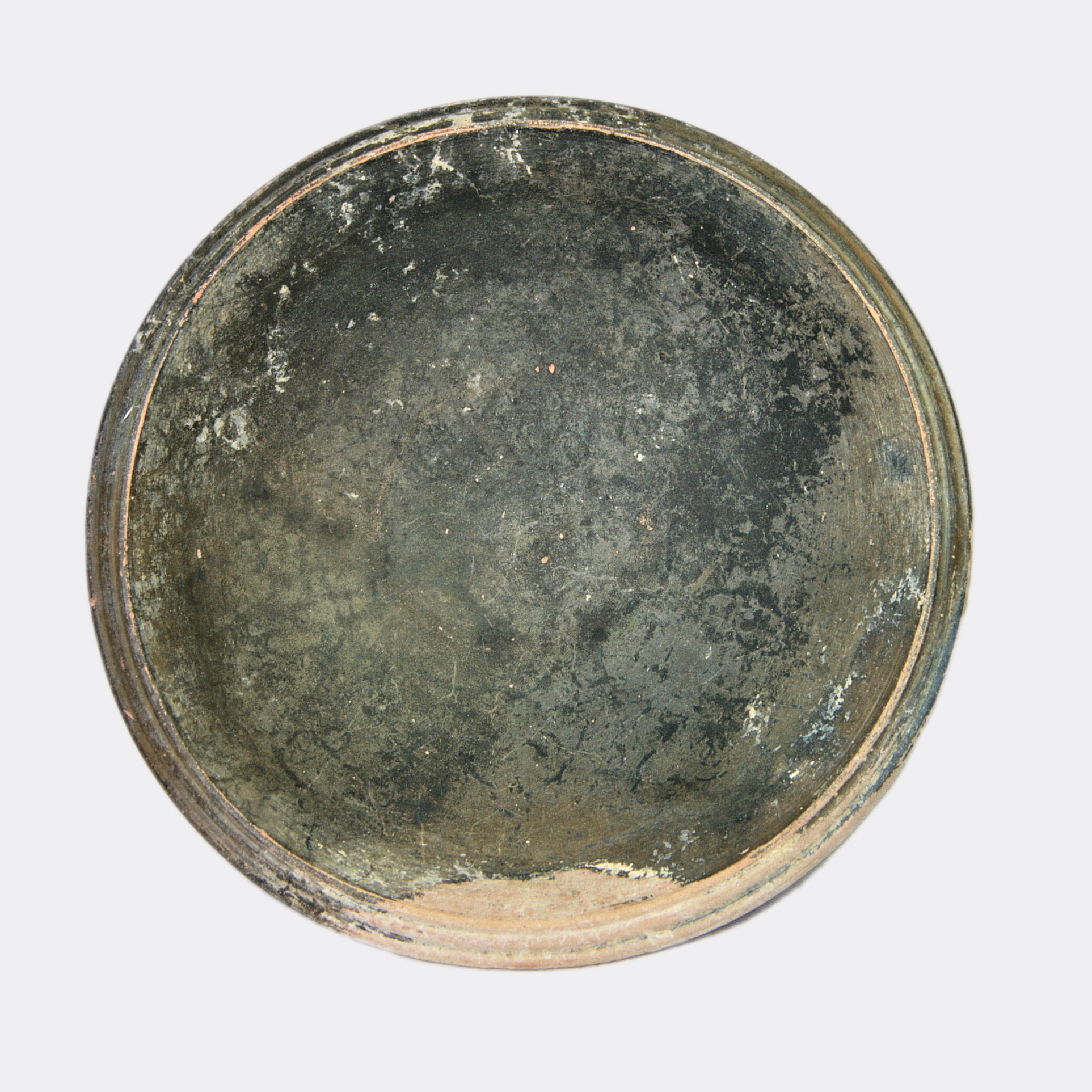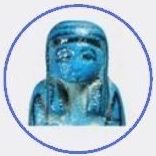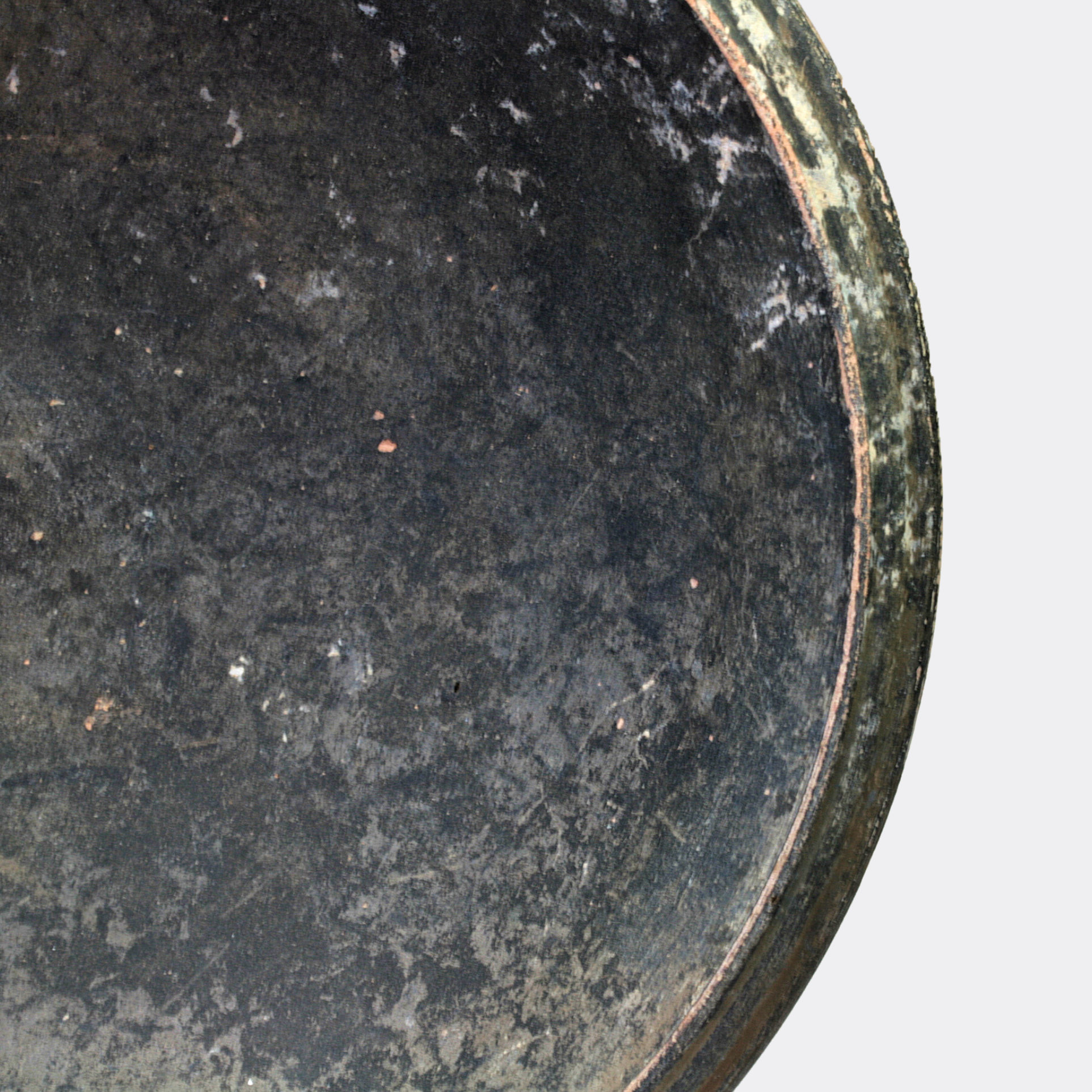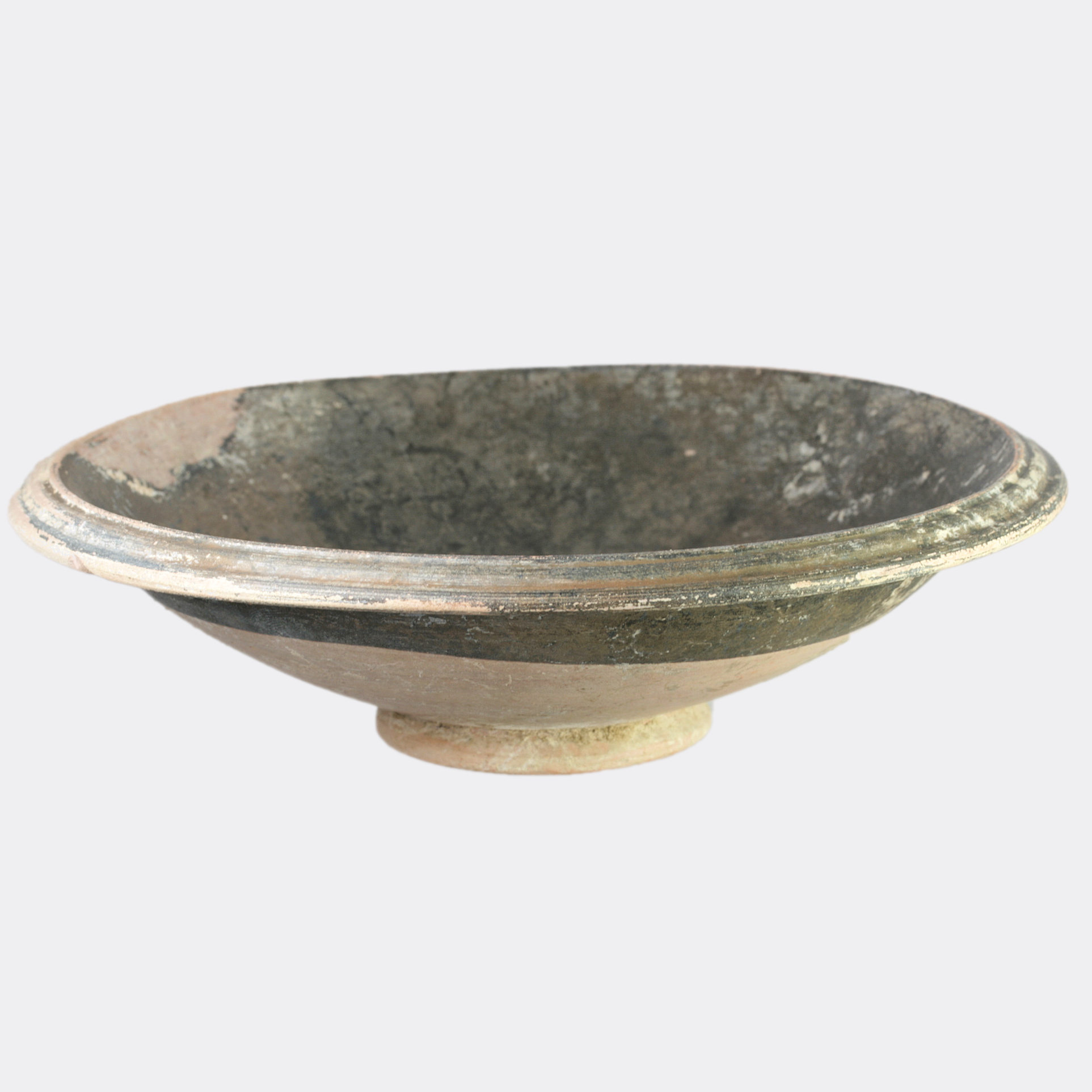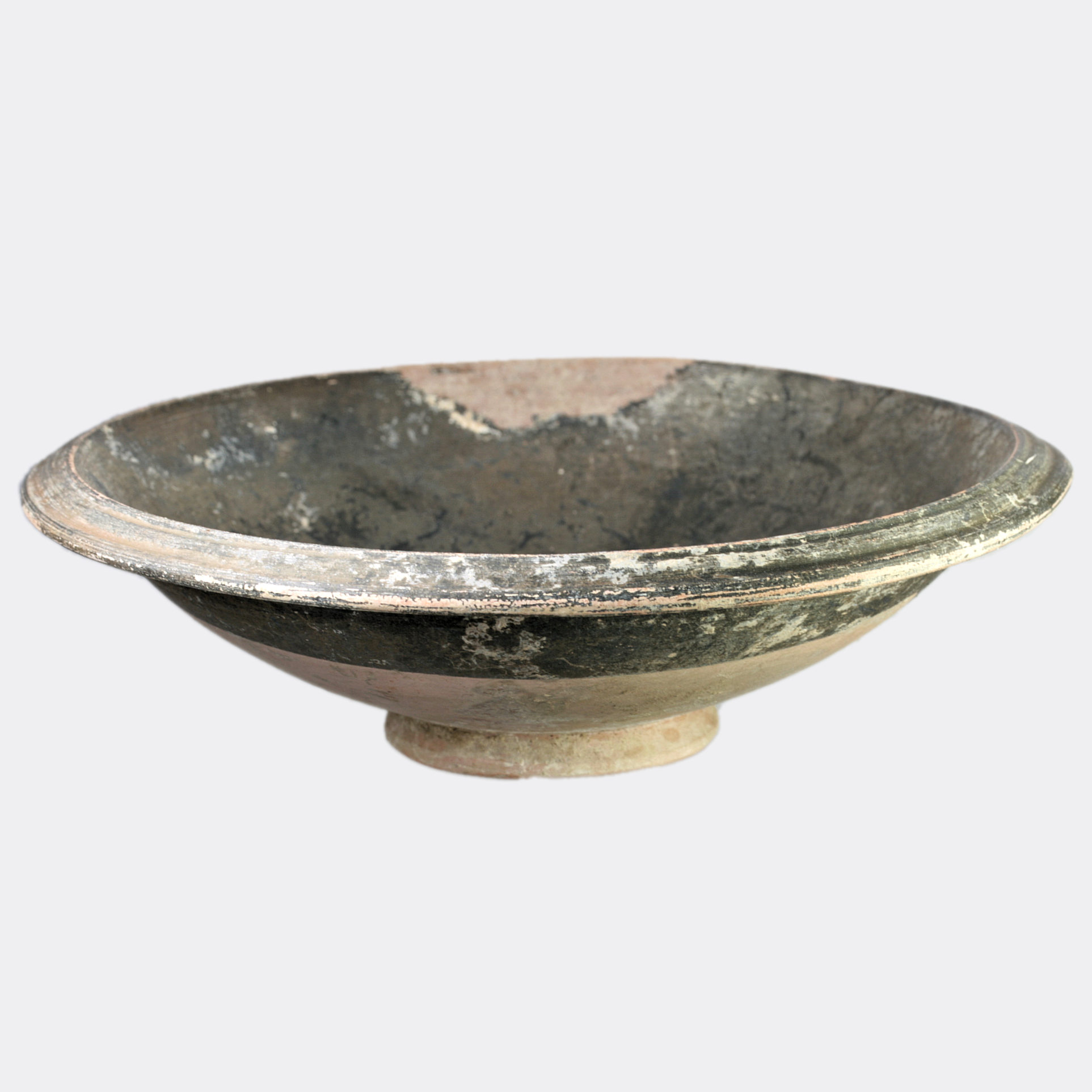£160.00
Sold
A black glazed pottery bowl with a ring foot and moulded rim.
Culture
Greek, Hellenistic, 3rd or 2nd Century BC
Size
4.6 x 16.6 cms
Condition
Areas of wear to the black glaze otherwise intact as shown
Provenance
Ex. deceased estate, Mons, Belgium; collection acquired mid to late 20th Century.
Sign up to our Mailing list
Thank you Rolf for another stunning item. I am a repeat customer. Helios Gallery is one of the most outstanding dealership enterprises online. Rolf always provides excellent service and is an expert in his field. Response from Helios Gallery Thank you, Brian, the mask is amazing, so glad you like it, Sam & Rolf 🙂Egyptian Funerary Mask
Only the quality of your offerings surpasses your incredible knowledge. Thank you for providing the opportunity to be the next custodian of such an extraordinary artefact.
Response from Helios Gallery
Thank you so much Brad, delighted you love the little vase, Sam & Rolf 🙂
I bought a really lovely figurine and I am delighted! I spoke to Rolph and he is a very nice chap, and the figurine arrived two days later. I have bought from Helios Gallery before, after reading glowing reports about them, and have always loved my purchases. Thank you so much.
Response from Helios Gallery
Thank you, Robin, Glad you like the little Osiris figure and thank you for taking the time to leave a kind comment about us, Sam & Rolf 🙂
The sandals have just arrived thank you. Unfortunately they don’t fit me so I have put them in my display cabinet where they look amazing along with the rest of my antiquities. Once again thank you and happy Christmas to you both.
Response from Helios Gallery
Love this! so glad they don’t fit 🙂 and delighted you love them, many thanks for your comment, Sam & Rolf
I have just purchased my ninth item from Helios and will continue to make this company my first choice when I want to buy an antiquity. I always feel confident that whatever I decide to buy is authentic and fairly priced, and the service provided to customers is excellent. Thank you Rolf and Sam
Response from Helios Gallery
Thank you, Andrew, for your great comment. and we are really pleased you love your growing collection, Rolf & Sam
This was my first time purchasing from this vendor and I couldn’t be happier. Once I placed my order, they personally emailed me thanking me and ensured it would be shipped out the next day. One week later, across the Atlantic – I received my piece. It was securely packed and handled with care. I look forward to supporting this vendor in the future!
Response from Helios Gallery
Thank you, Jean-Paul, so glad everything went smoothly and you’re happy with us and your lekythos, Sam & Rolf 🙂
This is my second purchase from Helios. Very happy with the pitcher- just as described in the website. A nice example of italo-geometric pottery. Well packaged as was the previous item. Fast dispatch. Altogether, very satisfied with this purchase. I am sure to return to this seller. Thank you.
Response from Helios Gallery
Thank you, Mike, for you lovely comment, we love to hear that you like the Oinochoe, it is a lovely piece, Many thanks Sam & Rolf: )
It’s already the second purchase I’ve made from Helios Gallery and for the second time I am satisfied. Rolf is kind and available to resolve any doubts quickly and professionally. I highly recommend helios gallery to everyone who loves history and antiquities!
Response from Helios Gallery
Thank you so much for you comment, and glad you like the Terracotta, Sam & Rolf
EMPRESA 100% RECOMANABLE PER LA PROFESSINALITAT I PEL BON TRACTE. ELS HE COMPRAT VARIES PECES I SEMPRE AMB LA CONFIANÇA DE QUE ESTIC ACOMPANYADA DE GRAN PROFESSIONALS
Response from Helios Gallery
Thank you Nuria, for your kind review, Sam & Rolf 🙂
Thank you very much for my ancient Greek redfigure shard – communication was excellent and the delivery was very fast!
I am very happy to adding the first ancient piece to my collection!!!
Response from Helios Gallery
Thank you, Grace, so glad you are happy with your first antiquity.
These people have become my go-to place for reasonably priced antiquities with excellent provenance. I know I can count on them to be ethical and responsible in our dealings, and my purchases always arrive on time or even early at times.
Response from Helios Gallery
Thank you, Richard, for your kind review, so glad you are pleased with us, we try to have an interesting group of Antiquities for sale. Sam & Rolf
I’m delighted with my purchase, it has exceeded my expectations! The axe head is exactly as described, and was delivered in very safe and secure packaging. Rolf was very courteous and helpful with his communication, which is greatly appreciated. Overall, I am very happy, and I highly recommended Helios Gallery!
Response from Helios Gallery
Thank you Jeremy, really pleased you like the axe head and many thanks for your kind comment, Sam & Rolf
I made my first purchase from Helios 17 years ago and since then I regurlarly buy Greek items with the same pleasure and full confidence. Once again this Minoan bowl is an excellent item ! I also want to warmly thank Rolf for his great support for administrative questions !
Response from Helios Gallery
Thank you, JP, for another kind comment, we value you as one of our longest established collectors, many thanks Sam and Rolf
I bought two exceptionel wonderful greek terracottas.
Fantastic items and fantastic service by the Helios Gallery.
Highly recommended!
Response from Helios Gallery
Fab comment Stefan, so glad you love the terracotta’s and thank you for taking the time to leave a review. Sam & Rolf:)
